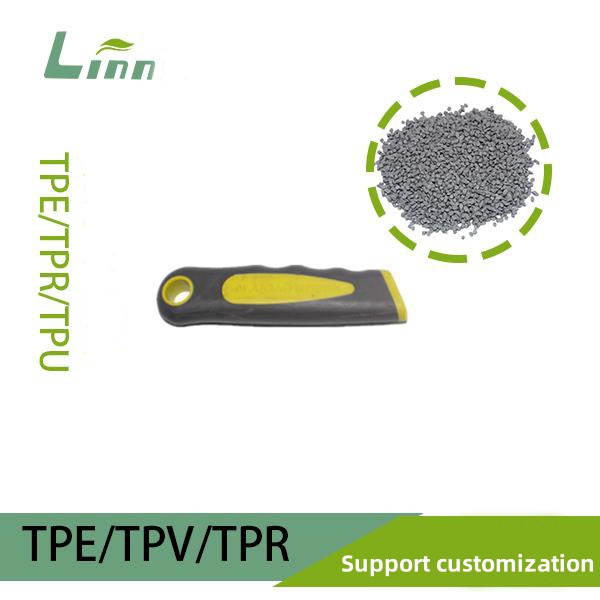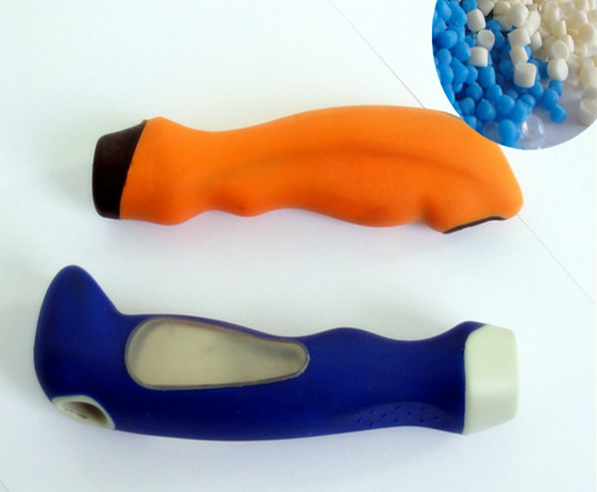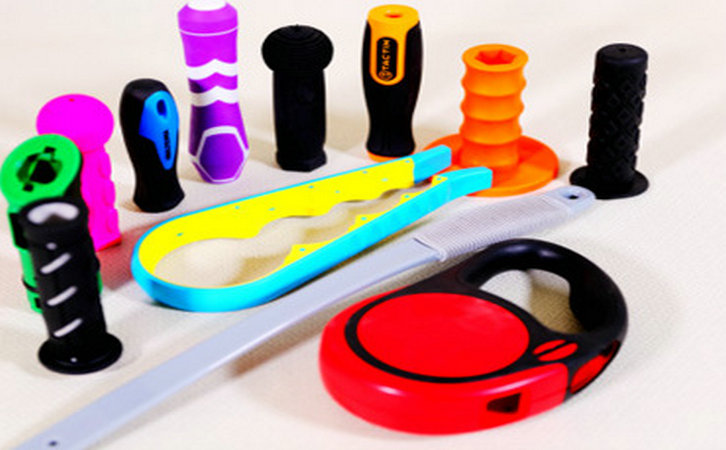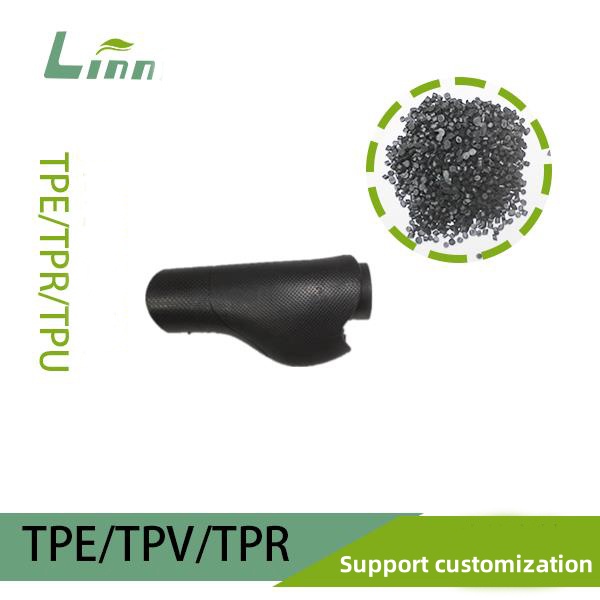In the bustling world of audio accessories, earphone cables are the unsung heroes that bridge the gap between our beloved devices and the sweet melodies we cherish. Whether you’re a music enthusiast, a podcast lover, or a frequent caller, the quality and durability of your earphone cables can significantly impact your listening experience. When it comes to choosing the right material for your earphone cables, two options often stand out: TPU (Thermoplastic Polyurethane) and TPE (Thermoplastic Elastomer). As someone who has spent years immersed in the audio accessories industry, I’ve had the opportunity to test, evaluate, and work with both materials extensively. Today, I’m here to share my insights and help you determine which one is better suited for your needs.

Understanding the Basics: What Makes a Great Earphone Cable?
Before diving into the specifics of TPU and TPE earphone cables, let’s quickly recap what makes an earphone cable great. A top-notch earphone cable should offer:
Durability: The ability to withstand bending, twisting, and pulling without fraying or breaking.
Flexibility: The capacity to bend and flex easily, making it comfortable to wear and convenient to store.
Tangle Resistance: The property of resisting tangles and knots, ensuring a hassle-free listening experience.
Sound Quality: Minimal interference with the audio signal, ensuring clear and crisp sound reproduction.
Aesthetic Appeal: A sleek, modern design that complements your earphones and personal style.
Cost-Effectiveness: A balance between performance and price, making it a viable option for everyday use.
Now, let’s explore how TPU and TPE earphone cables stack up against these criteria.
TPU Earphone Cables: The Robust and Resilient Choice
TPU is a class of polymers known for its exceptional durability, flexibility, and resistance to abrasion and chemicals. In the world of earphone cables, TPU has gained popularity for its robustness and resilience.
Advantages of TPU Earphone Cables:
Exceptional Durability: TPU earphone cables are renowned for their durability. They can withstand repeated bending, twisting, and pulling without showing signs of wear or tear. This makes them ideal for everyday use, especially for those who are constantly on the move.
High Flexibility: Despite its durability, TPU offers excellent flexibility, allowing the earphone cable to bend and flex easily. This makes it comfortable to wear and convenient to store, even in tight spaces.
Tangle Resistance: TPU has a natural tendency to resist tangles and knots, thanks to its smooth surface and slight stiffness. This means you can spend less time untangling your earphone cables and more time enjoying your music.
Good Sound Quality: TPU has minimal interference with the audio signal, ensuring clear and crisp sound reproduction. This makes it a great choice for audiophiles who demand the best sound quality.
Aesthetic Appeal: TPU earphone cables often come in a variety of colors and designs, allowing you to choose one that matches your personal style or complements your earphones.
Chemical Resistance: TPU is resistant to many chemicals, oils, and solvents, making it suitable for use in various environments.
Potential Drawbacks:
Stiffness: While TPU’s slight stiffness contributes to its tangle resistance, some users may find it less comfortable to wear for extended periods compared to softer materials.
Cost: TPU is generally more expensive than TPE, making TPU earphone cables a slightly pricier option. However, the added cost may be justified by the exceptional durability and performance.
Best For: Users who prioritize durability, tangle resistance, and sound quality. TPU earphone cables are ideal for everyday use, especially for those who are constantly on the move and need a reliable earphone cable that can withstand the rigors of daily use.

TPE Earphone Cables: The Soft and Supple Option
TPE is a versatile material known for its softness, flexibility, and cost-effectiveness. In the realm of earphone cables, TPE has gained popularity for its comfortable feel and affordability.
Advantages of TPE Earphone Cables:
Soft and Supple: TPE earphone cables are incredibly soft and supple, making them comfortable to wear for extended periods. They conform to the shape of your ears and neck, reducing discomfort and fatigue.
High Flexibility: TPE offers excellent flexibility, allowing the earphone cable to bend and flex easily. This makes it convenient to store and carry, especially when traveling.
Cost-Effective: TPE is generally more affordable than TPU, making TPE earphone cables a cost-effective option for everyday use. This makes them a great choice for budget-conscious consumers.
Good Tangle Resistance: While not as tangle-resistant as TPU, TPE earphone cables still offer decent tangle resistance, thanks to their smooth surface and slight elasticity.
Aesthetic Appeal: TPE earphone cables often come in a variety of colors and designs, offering a sleek, modern look that complements your earphones.
Environmental Friendliness: TPE is a non-toxic, eco-friendly material that can be recycled or reused. This makes TPE earphone cables a more sustainable option compared to some other materials.
Potential Drawbacks:
Durability: While TPE is soft and flexible, it may not be as durable as TPU in terms of withstanding repeated bending and pulling. Over time, TPE earphone cables may show signs of wear or tear, especially at the connectors.
Sound Quality: While TPE has minimal interference with the audio signal, some users may perceive a slight difference in sound quality compared to TPU, especially in high-end audio systems. However, this difference is often negligible for most users.
Best For: Users who prioritize comfort, flexibility, and cost-effectiveness. TPE earphone cables are ideal for those who want a soft, supple earphone cable that feels great to wear and won’t break the bank.

Comparative Analysis: TPU vs. TPE Earphone Cables
To help you better understand the differences between TPU and TPE earphone cables, here’s a comparative analysis table:
| Material | Durability | Flexibility | Tangle Resistance | Sound Quality | Aesthetic Appeal | Cost-Effectiveness | Best For |
|---|---|---|---|---|---|---|---|
| TPU | High | Excellent | Excellent | High | Varied | Moderate | Everyday use, durability-focused users |
| TPE | Moderate | Excellent | Good | Good | Varied | High | Comfort-focused users, budget-conscious consumers |
Key Takeaways from the Table:
TPU offers superior durability and tangle resistance, making it ideal for everyday use and durability-focused users. It also provides excellent flexibility and sound quality, ensuring a comfortable and high-fidelity listening experience.
TPE provides a soft, supple, and cost-effective option with good tangle resistance and sound quality. It’s ideal for comfort-focused users and budget-conscious consumers who want a comfortable and affordable earphone cable.
Choosing the Right Earphone Cable for Your Needs
Selecting the right earphone cable for your needs depends on several factors, including your listening habits, budget constraints, and comfort preferences. Here are some tips to help you make an informed decision:
Assess Your Listening Habits: Consider how often you use your earphones and in what scenarios. If you’re constantly on the move and need a durable earphone cable that can withstand the rigors of daily use, TPU may be the better choice. If you prioritize comfort and affordability, TPE may be more suitable.
Evaluate Durability Requirements: If you’re rough on your earphone cables or frequently bend and twist them, TPU’s superior durability may be a deciding factor. However, if you handle your earphone cables with care and don’t subject them to excessive stress, TPE’s softness and flexibility may be more appealing.
Consider Tangle Resistance: If you’re tired of untangling your earphone cables every time you want to use them, TPU’s excellent tangle resistance may be a valuable feature. However, if you’re willing to spend a little extra time untangling your cables for the sake of comfort and affordability, TPE may still be a great option.
Review Sound Quality Preferences: While both TPU and TPE offer good sound quality, some users may perceive a slight difference in fidelity. If you’re an audiophile who demands the best sound quality, TPU may be the better choice. However, if you’re more concerned with comfort and affordability, TPE’s sound quality may be sufficient for your needs.
Factor in Cost: While TPU offers exceptional durability and performance, it may be more expensive than TPE. Consider your budget constraints and whether the added cost of TPU is justified by your specific needs.
Read Reviews and Testimonials: Before making a purchase, read reviews and testimonials from other users to get a sense of their experiences with TPU and TPE earphone cables. This can help you make a more informed decision based on real-world feedback.

Real-World Examples and User Feedback
To illustrate the practical applications of TPU and TPE earphone cables, let’s look at some real-world examples and user feedback.
Example 1: Everyday Use
A user who frequently commutes and needs a durable earphone cable for their daily listening sessions chose a TPU earphone cable due to its exceptional durability and tangle resistance. The TPU earphone cable has withstood the rigors of daily use, including being stuffed into pockets, purses, and backpacks, without showing signs of wear or tear.
Example 2: Comfort-Focused User
A user who prioritizes comfort and wears their earphones for extended periods chose a TPE earphone cable due to its softness and suppleness. The TPE earphone cable feels great to wear and doesn’t cause any discomfort or fatigue, even after hours of use.
Example 3: Budget-Conscious Consumer
A user who wants a high-quality earphone cable but doesn’t want to break the bank chose a TPE earphone cable due to its affordability and decent performance. The TPE earphone cable offers good sound quality, tangle resistance, and durability for its price point, making it a great value for money.

Maintenance and Care Tips for Earphone Cables
Regardless of the material you choose for your earphone cable, proper maintenance and care are essential to ensure its longevity and performance.
Maintenance Tips:
Avoid Excessive Bending and Pulling: While TPU and TPE earphone cables are flexible, excessive bending and pulling can still cause wear and tear over time. Handle your earphone cable with care and avoid subjecting it to unnecessary stress.
Keep Clean: Regularly clean your earphone cable with a soft, dry cloth to remove dirt, debris, and fingerprints. Avoid using harsh chemicals or abrasive materials that could damage the cable’s surface.
Store Properly: When not in use, store your earphone cable in a cool, dry place away from direct sunlight and extreme temperatures. This will help prevent degradation and extend its shelf life.
Use a Cable Organizer: To prevent tangles and knots, consider using a cable organizer or tie to keep your earphone cable neat and tidy when not in use.
Additional Tips for Specific Materials:
TPU Earphone Cables: Be aware that TPU may become slightly sticky or tacky in humid environments. If possible, store TPU earphone cables in a dry place or use a dehumidifier to maintain optimal conditions.
TPE Earphone Cables: While TPE is soft and flexible, it may be more susceptible to damage from sharp objects or abrasive surfaces. Handle your TPE earphone cable with care to avoid punctures or tears.

Future Trends in Earphone Cable Materials
As the audio accessories industry continues to evolve, we can expect to see several exciting developments in earphone cable materials.
Advanced Formulations: Manufacturers are constantly developing new formulations of TPU and TPE to improve their performance characteristics, such as durability, flexibility, and sound quality.
Sustainable Materials: There’s a growing trend towards using more sustainable and environmentally friendly materials in earphone cables. This includes the development of bio-based TPU and TPE formulations, as well as the use of recycled materials.
Smart Earphone Cables: Some companies are exploring the integration of sensors and other technologies into earphone cables to create “smart” earphone cables that can monitor their own performance, detect faults, and even provide audio feedback.
Customization and Personalization: With the rise of 3D printing and other advanced manufacturing techniques, we may see more opportunities for customizing and personalizing earphone cables to meet specific user preferences and needs.
Conclusion: Finding the Perfect Earphone Cable
In conclusion, choosing the right earphone cable for your needs is a critical decision that can significantly impact your listening experience. By understanding the differences between TPU and TPE earphone cables and evaluating your specific listening habits, budget constraints, and comfort preferences, you can make an informed decision that meets your needs.
Whether you opt for TPU for its exceptional durability, tangle resistance, and sound quality, or TPE for its softness, flexibility, and cost-effectiveness, remember that the most important thing is to choose an earphone cable that provides reliable performance and meets your specific requirements.

Related Questions and Answers
Q1: Can TPU and TPE earphone cables be used with all earphones?
A1: Yes, both TPU and TPE earphone cables are compatible with a wide range of earphones, including those with standard 3.5mm audio jacks, Lightning connectors, and USB-C ports. However, it’s always a good idea to check the specifications of your earphones and the earphone cable to ensure compatibility.
Q2: Are there any differences in sound quality between TPU and TPE earphone cables?
A2: While both TPU and TPE offer good sound quality, some users may perceive a slight difference in fidelity. TPU is often favored by audiophiles for its minimal interference with the audio signal, ensuring clear and crisp sound reproduction. However, the difference in sound quality is often negligible for most users, and TPE still provides a satisfactory listening experience.

Q3: How do I clean my TPU or TPE earphone cable?
A3: To clean your TPU or TPE earphone cable, use a soft, dry cloth to wipe away dirt, debris, and fingerprints. Avoid using harsh chemicals or abrasive materials that could damage the cable’s surface. If necessary, you can use a mild soap and water solution to clean the cable, but be sure to dry it thoroughly before using it again.
Q4: Can I recycle my TPU or TPE earphone cable?
A4: Yes, both TPU and TPE are recyclable materials. However, the recycling process may vary depending on your local recycling facilities and the specific formulation of the earphone cable. It’s important to check with your local recycling authorities to determine the best recycling options for your earphone cable.
Q5: How do I extend the lifespan of my earphone cable?
A5: To extend the lifespan of your earphone cable, handle it with care, avoid excessive bending and pulling, keep it clean, and store it properly when not in use. Additionally, consider investing in a high-quality earphone cable from a reputable manufacturer to ensure durability and reliability.





